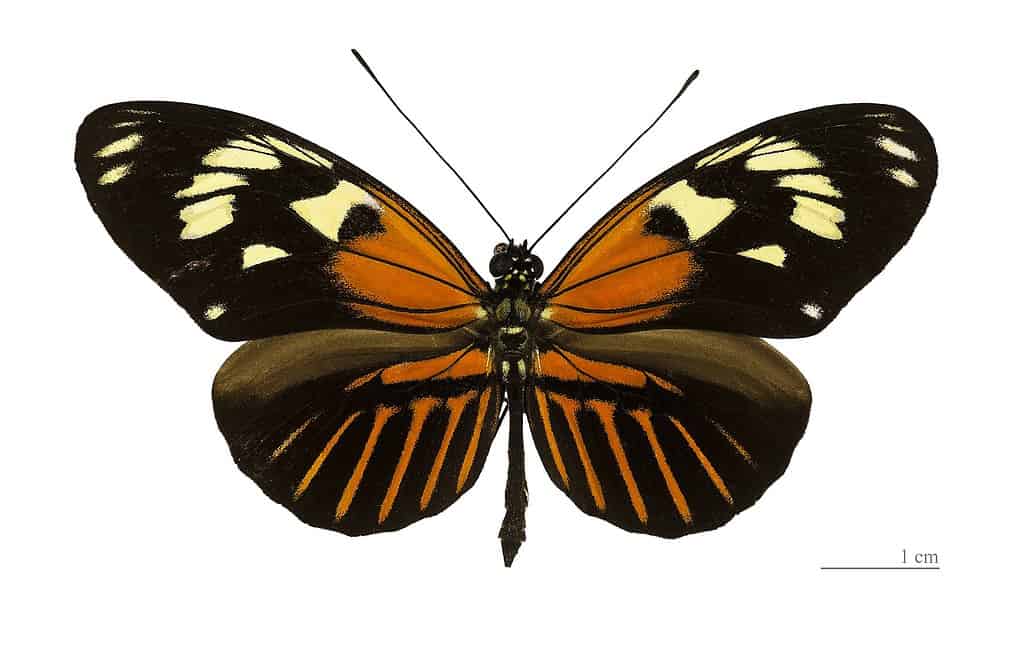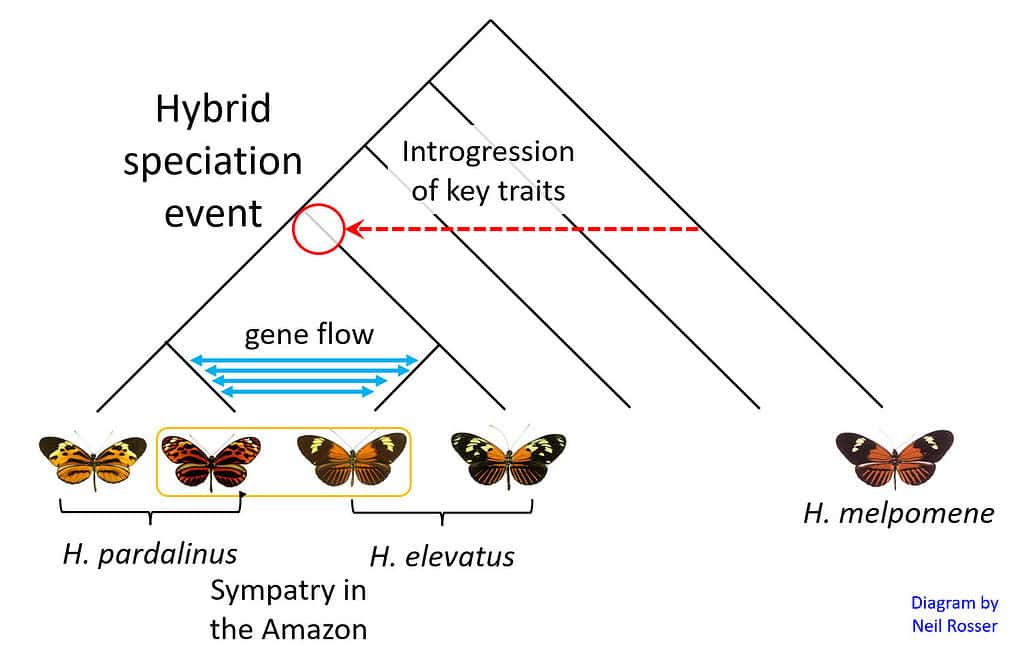We think of evolution as a tree, with individual species as leaves on an evolutionary branch. Sometimes, though, the leaves intertwine. Two different species can sometimes create offspring called hybrids. The most common example is the mule, the offspring of a horse and a donkey.
Animal hybrids are often infertile, especially when there are significant genetic differences between the parent species. However, there are exceptions. Sometimes, the hybrids can be fertile, particularly if the parent species are genetically similar. In the new study, researchers describe a striking example. Not only were these butterfly hybrids fertile — they created a new species.

Heliconius butterflies are remarkable creatures. They’re brightly colored and their colors signal their distastefulness to potential predators. Biologists use them models for studying how, through their complex mimicry patterns, new species push genetic exchange and ecological adaptation.
But hybrid species was not on biologists’ Bingo card for Heliconius.
In plants, hybrid speciation is well-documented, largely due to the doubling of chromosomes. However, in animals, such events are rare and complex, particularly when the chromosome number remains unchanged. Heliconius butterflies, with their recently uncovered speciation story, provide a compelling narrative on how hybridization can drive speciation in animals.
“Historically hybridization was thought of as a bad thing that was not particularly important when it came to evolution,” said Neil Rosser, an associate of entomology at Harvard’s Museum of Comparative Zoology who co-authored the study and handled its genetic mapping with Harvard postdoctoral fellow Fernando Seixas. “But what genomic data have shown is that actually hybridization among species is widespread.”
The findings may alter how we view the concept of a species. “A lot of species are not intact units,” said Rosser. “They’re quite leaky, and they’re exchanging genetic material.”
Hybrid + hybrid = new species
Rosser and colleagues sequenced the genome of the species Heliconius elevatus. They found that this species emerged after a hybridization event some 180,000 years ago between two other species: H. melpomene and H. pardalinus.
Everything about H. elevatus suggests it’s a new species. It has a distinct caterpillar host plant, different pheromones, different color patterns, wing shape, and flight — it’s an entirely new species. Even more strikingly, all three species now live across a vast area of the Amazon rainforest, covering different ecological niches.
“Normally, species are thought to be reproductively isolated,” added co-author James Mallet, professor of organismic and evolutionary biology at Harvard. “They can’t produce hybrids that are reproductively fertile.” While there is now evidence of hybridization between species, what was difficult to confirm was that this hybridization is, in some way, involved in speciation. As Mallet put it: “The question is: How can you collapse two species together and get a third species out of that collapse?”

However, the vast majority of H. elevatus’ genome comes from one of the parent species (H. pardalinus). This minimal but significant genetic contribution illustrates a fascinating aspect of evolution: sometimes, a small fraction of the genome can have a profound impact on an organism’s evolutionary trajectory. It’s in these genetic “islands” that we find traits that enable H. elevatus to thrive in its niche, differentiating it from its parental species despite ongoing gene flow.
For instance, one of the most striking features of Heliconius elevatus is its wing coloration. These colors are not just for display; they serve a critical function in mimicry, which protects the butterflies from predators. Mimicry in Heliconius is a well-studied phenomenon. Different species display similar wing patterns to all communicate toxicity, a survival strategy that reduces the likelihood of being eaten.
Species can “leak”
The new research is more than just finding a rare event: the case of Heliconius elevatus challenges the traditional views of speciation and adaptation. This may even alter how we see a species.
It shows that species may not be as well-defined as we thought — the leafs on the tree of evolution have blurry lines. Already, previous research showed that the difference between species and subspecies is not as clear as once thought and over the past decade or two, researchers have found more and more clues that hybridization also plays a role in this process.
“Over the last 10 or 15 years, there’s been a paradigm shift in terms of the importance of hybridization and evolution,” Rosser said. Traditionally, hybridization was thought to inhibit speciation. Now, the opposite seems to be the case. “The species that are evolving are constantly exchanging genes, and the consequence of this is that it can actually trigger the evolution of completely new lineages,” said Rosser.
The study was published in Nature.









